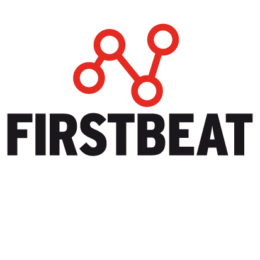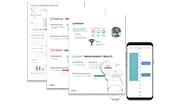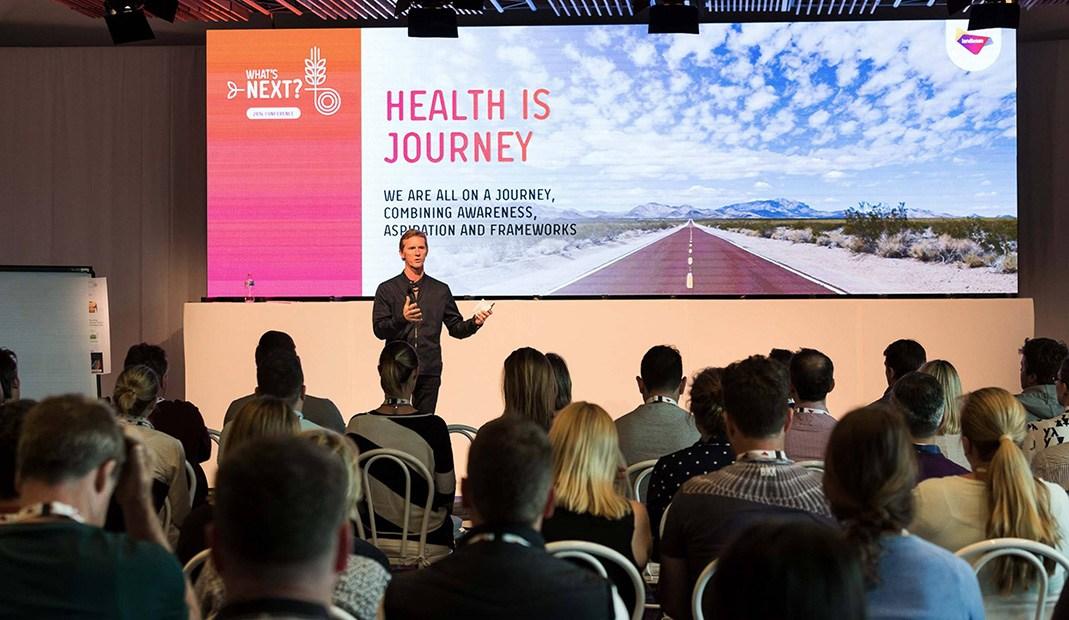
“In an always-on world, maintaining energy levels and getting the necessary recovery is going to be increasingly important.”
That’s the view of Duncan Young, Head of Workplace Health and Well-being at International property company Lendlease. “What we try and do is help people be their best not only at work but in their overall life as well.”
Working for an organization that boasts 14,000 employees across multiple continents, Duncan, who has over 25 years’ experience in the industry, works to improve the well-being and health of staff. The aim is to help people thrive rather than just survive and, in turn, help businesses succeed. To achieve this, the Firstbeat Lifestyle Assessment is incorporated into individual and group well-being programs.
We caught up with Duncan from his base in Sydney, Australia to see what role Firstbeat’s professional grade coaching tool plays in Lendlease’s overall Health and Well-being Framework.
Three-stage approach
“Enhancing wellbeing is a journey and we have a three-stage approach towards helping people improve their health and well-being,” explains Duncan, who typically runs programs with groups of between 10-40 people.

The first stage is the ‘awareness program’. Here, Duncan explains, it’s all about engaging people with health and well-being in general. This includes discussion about the power of effective recovery, the impact of restorative daytime breaks and the idea that “we can’t isolate work and life anymore”.
This is followed by the second, ‘energy renewal’, stage which involves the Firstbeat Lifestyle Assessment.
“Everyone on the program that wants to, gets a Lifestyle report and we take them through the science behind the Heart Rate Variability analytics used,” reveals Duncan. “From the data, we identify the small changes that can be made in someone’s everyday routine to increase recovery and decrease stress.”
The final stage sees individuals “build their ideal day”. Once participants understand how better health and well-being impacts their daily lives – from improving resilience to better efficiency at work – and become aware of their own situations through the Firstbeat data they identify changes which will have a meaningful impact.
“In simple terms, we get people to visualize what their ideal day is, and we build small elements of that into their everyday working life. Then we overlay that with change management theory and ensure these small incremental changes are embedded.”
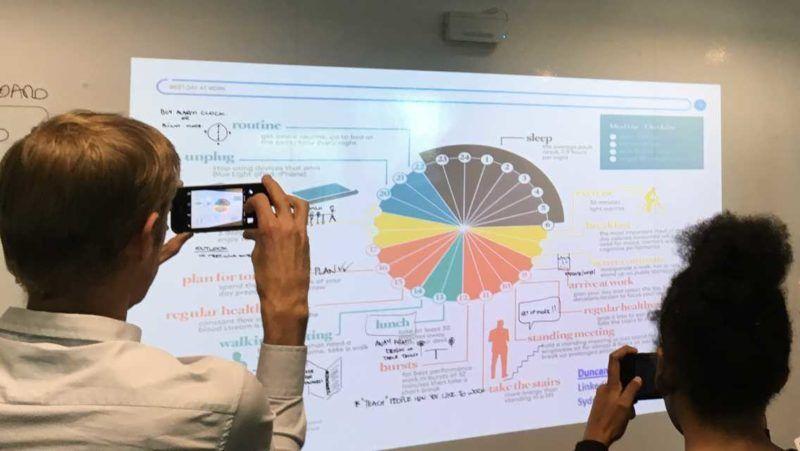
These incremental changes are fundamental in achieving the ultimate goal of improved well-being. As Duncan notes, “health is a journey and small positive steps made over time improve our health.”
The Lifestyle Assessment allows Duncan and his team to help individuals identify these “marginal gains”. By monitoring Heart Rate Variability over a full 24-hour period, it provides stress, recovery and exercise data to create a complete picture of their health and performance.
“By building people’s curiosity about their health and well-being through actual data we get much deeper engagement. For us, the Firstbeat Lifestyle Assessment is an awareness and engagement tool.”
The reality of sleep
Duncan has overseen approximately 600 total Lifestyle Assessments over the last 2 years alone. The results have played a part in habit changes ranging from reducing alcohol intake to exercising in the morning instead of at night. One area where the data consistently has a big impact, though, is sleep and the issue of effective recovery.
“What makes Firstbeat a powerful tool is that it shows just because you sleep it doesn’t mean you’re recovering well. It’s a basic thing but it is a big thing for people and it brings to life the importance of energy renewal.
“Most people think just because they’re sleeping they’re recovering and Firstbeat data shows this isn’t always the case. The 24-hour data sets and three-day measuring period let you see what you do during the day that affects your sleep.”
Opening up the discussion
The programs run by Duncan at Lendlease often involve whole teams or departments. And by showing the anonymized Firstbeat group data alongside individual feedback reports, Duncan has found it helps normalize health and well-being and encourages more open discussion between colleagues.
“We’re bringing the concept of health and well-being to life by showing people’s anonymous Lifestyle reports. And what we find is that, once people start to talk about their general health and well-being, people start talking about their sleep patterns or people joke about being monitored when they’ve had a few drinks after work. The Lifestyle Assessment aspect really is a way into these conversations.”
These conversations help cultivate a healthier work culture. Employees can go to management about their issues or feel comfortable talking to workmates about, for example, solutions to poor sleep or exhaustion.
“What often becomes apparent is that most of the people in the room already have the solution for another person, they just haven’t had the chat about what’s causing them stress or what the best recovery techniques are.”
Multiple benefits
So why does this all matter? Why should staff care about their stress-recovery balance at work? And why should decision-makers be concerned their workforce is consistently experiencing poor overnight recovery?
There are short and long-term benefits for both employees and employers.
For employees, it is all about putting yourself in a situation that lets you be the best version of yourself. A routine that increases recovery lets your body recharge for the challenges ahead. This can lead to better decision-making and energy at work, and even an elongated life.
Meanwhile, as Duncan puts it, “People are a company’s number one asset so healthy people make for healthy business.”
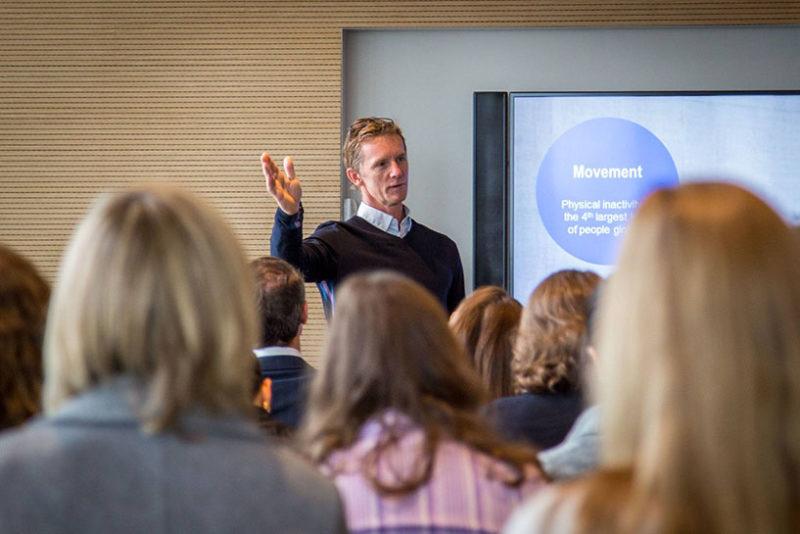
If employees are in a better physical and mental state, they have the physiological resources to cope with the inevitable pressures of work. They are in a better position to be productive and be a positive influence on any business.
“In general, we’re moving from the management of chronic diseases to what makes people thrive in all aspects of their life, and that’s the area we try and focus on with Firstbeat technology.”
To learn more about the impact of health and well-being in the workplace download the Firstbeat Guide to Modern Workforce. And keep an eye out for our upcoming article with Duncan where we discuss issues in society affecting well-being, and how they can be solved.
If you liked this article, you should subscribe to our mailing list
You might also be interested in

Removing the Guesswork from Women’s Basketball Coaching with Firstbeat
It takes up a little bit more of my time, but I’d rather not guess. You can see when people are tired but if you’re a good strength coach, you want to figure out why. Firstbeat gives you enough information to figure out why someone is tired or why someone is not tired.

Boosting Pilot Well-Being with Personal B.A.S.E. and Firstbeat Life
In the high-stakes world of air rescue, maintaining peak physical and mental performance is critical. Gerhard Moser has developed a unique approach to helping his clients achieve optimal health and…
